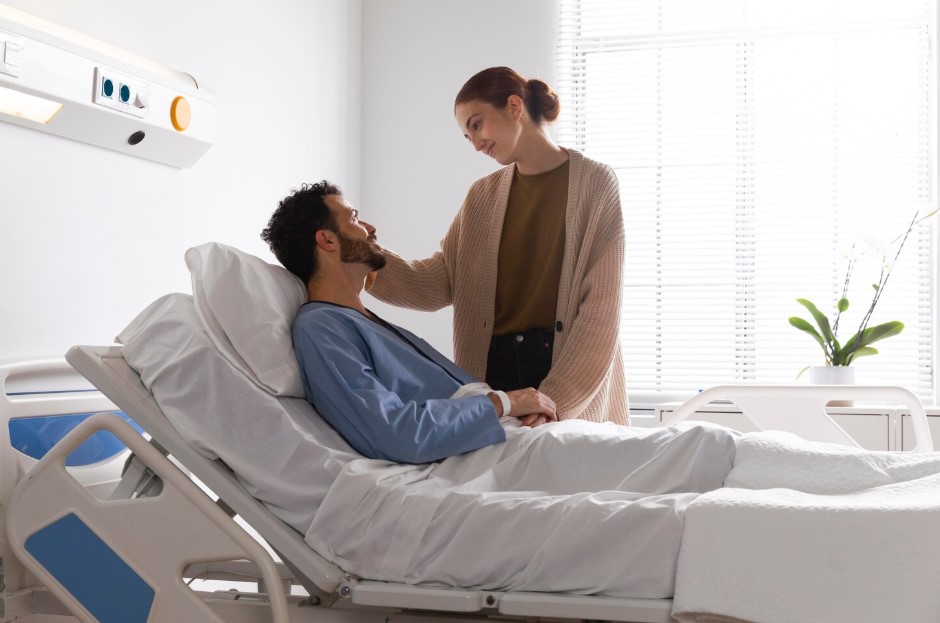17
May 2021
How Hospitals Approach Care For the Elderly
Published in General on May 17, 2021

Caring for the elderly is a sophisticated and precise science that requires medical knowledge, immaculate clinical skills, and an empathetic, humble attitude.
With increasing age, people are more likely to get hospitalized for a whole gamut of conditions and because of their age, hospitalization becomes a very stressful experience. This is especially true when they’re transferred to a hospital from an aged care home.
Aged care homes like Banfields usually have a very calm and relaxed environment that makes the elderly population feel at home.
This is in stark contrast to the cold as steel environment that hospitals have, stripping people of their autonomy and making them nervous as they battle with uncertainty, pain, and disease. So how do hospitals work to provide the best care to the elderly? Let’s find out!
Ensuring optimum functioning
When elderly patients are transferred to acute care settings like a hospital, they can experience a significant decline in their routine functioning.
The patients are often afraid, stressed, in pain, and frustrated. That’s because a hospital admission not only takes away their autonomy but can also massively disrupt their normal routines, activity levels, confidence, and sense of self.
In addition to these, hospitalization puts elderly patients at significant risk for medical complications like delirium, falls, infections, dehydration, and pressure injuries.
The goal of the hospital is to prevent all these problems. This is achieved by having staff that’s not only quick to recognize any early signs of medical complications, but also has a loving and kind attitude and understands the significant distress its patients are in.
In addition to that, multidisciplinary teams are often employed for tackling the wide range of complications elderly patients can develop during their hospital stay.
Proper discharging
Hospitals need to ensure that the functional status of their patients at the time of discharge is similar (or better) to their status when they first came in.
To ensure that, proper discharging is important. Hospitals often create discharge plans well in advance, which take into account the functional status of the patient as well as any feedback or concerns the patient or her family might have.
Some hospitals have tried implementing a comprehensive transitional care program, which involves a transition coach or a nurse providing follow-up home visits or telephone calls to discharged patients.
Comprehensive transitional care programs have shown to reduce rehospitalization rates but they’re not cost-effective, so more work is needed to make them feasible.
Pain is treated aggressively
Pain is the most dreadful symptom patients experience at a hospital. Elderly patients find pain even more discomforting, which can lead to significant functional impairment in them.
That’s why doctors are always on the lookout for pain when treating elderly patients (or any patient for that matter). Their goal is to identify pain as early as possible and to treat it aggressively.
Doctors are usually reluctant about prescribing opioids for pain-control but the 2009 American Geriatrics Society guidelines actually recommend opioids for severe pain, especially if it causes functional impairment.
Hospitals ensure older patients are not deprived of dignity and autonomy
While dignity and autonomy are important for patients of any age, doctors are particularly prone to neglecting these when dealing with elderly patients.
An elderly patient who’s treated with disrespect and apathy can make him resign physically and mentally, which will negatively impact his overall functional status, something hospitals need to maintain at a good level before they can discharge a patient.
Some practices hospitals follow to maintain patient dignity include using respectful language, adequately explaining medical conditions to patients and their families, involving patients and their families in decision making, taking the time out to address any fears, questions, or concerns a patient might have, and importantly, being culturally aware and sensitive.
Of course, sometimes hospitals are understaffed and the doctors overworked, which might make doctors rush through the patients and leave the elderly with feelings of anger and frustration.
This can’t always be avoided, especially in current times, where large parts of the world are overburdened with COVID-19 patients. However, you’ll often find centers that specialize in geriatric care making sure patients are not deprived of dignity and autonomy.
Hospitals aim to help elderly patients navigate easily through their hospital stay
A lot of elderly patients have auditory, visual, or cognitive impairment when they arrive at the hospital.
Plus most acute care settings are fast-paced, which can lead to significant confusion to an already struggling elderly patient.
Some hospitals try to reduce this confusion by offering a calm environment that can make patients feel at home.
However, that’s often not possible. But some measures can still be taken and these include setting up clear directions to the toilet, writing information in large print, having furniture and beds that are suitable and easy-to-use for elderly patients, and adequate lighting (especially at night).
All these reduce confusion in elderly patients and improve their comfort levels, both of which are important factors to consider when you’re trying to ensure patients don’t decline functionally during their hospital stay!









